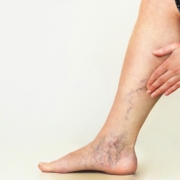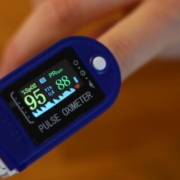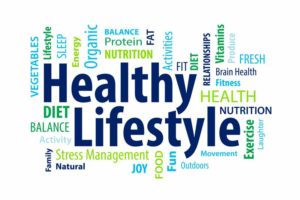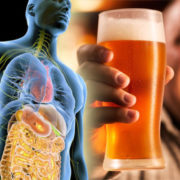Chia Seeds During Pregnancy
What are Chia Seeds?
Chia is as super for pregnant women as it is for everyone else. Chia seeds are tiny edible seeds that contain several vital nutrients. They are full of fiber and packed with Omega 3 fatty acids and antioxidants. These little seeds contain calcium, phosphorus, magnesium, and protein and these are important for bone health. Since these nutrients promote overall health, consuming chia seeds during pregnancy can benefit you and your baby. This is a great seed for healthy living.
Is it safe to eat chia seeds during pregnancy?
Some people wonder whether chia seeds are safe to eat while pregnant or breastfeeding. Chia seeds are safe to consume during pregnancy and can actually boost the chances of a healthy delivery. Many expecting mothers wonder how much chia seeds should be consumed daily. Knowing this is essential as excessive intake of these seeds can have certain side effects that may affect you and the baby. Around 100g of chia seeds provide approximately 20g of protein. Consuming 1 tablespoon of chia seeds can provide you with 3g of protein. Chia seeds also contain iron and calcium, both of these minerals are essential for a healthy pregnancy. These vitamins are great for both you and your baby while pregnant.
Benefits of chia seeds in pregnancy
- Relief from constipation: Chia seeds are loaded with insoluble fiber that aids digestion. It can, therefore, treat constipation, a common complaint during pregnancy.
- Can boost your red blood cells
- Can strengthen baby’s teeth and bones: Chia seed is a good source of Calcium which will ensure proper skeletal development of your baby and even help build his tooth buds.
- Can help prevent anemia.Blood sugar regulation: The fiber in chia seeds can slow down the absorption of sugar in your blood and keep it stable, thereby lowering the risk of Type 2 diabetes and heart disease
- Can help you stay full longer: So whenever possible, add a few sprinkles of chia seeds to your recipes.The more protein-rich foods you eat, the less hungry you’ll feel.
- A good source of omega-3: Omega-3 helps reduce chronic inflammation, contributes to eye health, and even eases anxiety and depression. It also promotes healthy brain development in unborn babies and may even contribute to a healthy pregnancy
- Can help promote fetal development: Chia seeds are a healthy source of protein, which is an extremely important nutrient during pregnancy as it promotes the development of organs (including the brain) and cells of the fetus.
- May give more energy: As a healthy fat, chia seeds may give you a much-needed pick-me-up. The seeds aren’t going to eliminate fatigue; they’re a superfood, not a miracle cure.
- Improves oxygen supply: Chia contains Iron that is essential for the production of extra red blood cells that carry oxygen to the body system. Chia seeds are one of the easiest ways to get this nutrient into your diet.
Risks of Chia Seeds in pregnancy
- stomach discomfort can result from eating too much – Chia seeds are healthy and natural, but this doesn’t mean you can’t overdo it.
- Chia seeds are blood thinners and may lower your blood pressure and cause bleeding.
- Possible drug interactions do exist – although chia seeds regulate blood sugar levels, they may interact with certain drugs and medication.
- May trigger allergic reactions – Chia seeds may also trigger allergic reactions like rashes, hives, and watery eyes.
How to Consume Chia Seeds
- Chia seeds with water
- Chia seeds smoothie
- Chia Seeds Sandwich
- Chia seed pudding
- Chia protein pancakes
Chia seeds are a necessity for pregnant women due to their high protein content and excellent nutrition profile. Chia seeds might be small in size, but there’s nothing insignificant about their nutritional punch. They are nutritious, and they are safe to consume while pregnant or breastfeeding. So whether you’re looking for a bit more energy or you want to try getting rid of constipation, go ahead and sprinkle some chia seeds over your food. And don’t stop eating the seeds just because you’ve given birth; their health benefits are for everyone. We recommend that you speak to your doctor and find out whether they interfere with your existing medications before you begin incorporating them into your diet. As always, add one to two tablespoons of chia seeds a day during pregnancy and you’ll be all set for your pregnancy.
Disclaimer
The information, including but not limited to, text, graphics, images and other material contained on this website are for informational purposes only. The purpose of this website is to promote broad consumer understanding and knowledge of various health topics. It is not intended to be a substitute for professional medical advice, diagnosis, or treatment. Always seek the advice of your physician or another qualified healthcare provider with any questions you may have regarding a medical condition or treatment before undertaking a new health care regimen, and never disregard professional medical advice or delay in seeking it because of something you have read on this website.
References:
https://www.momjunction.com/articles/chia-seeds-during-pregnancy_00446553/
https://www.healthline.com/health/pregnancy/chia-seeds-pregnancy https://www.medicalnewstoday.com/articles/chia-seeds-pregnancy#benefits
https://www.medicalnewstoday.com/articles/chia-seeds-pregnancy#benefits









